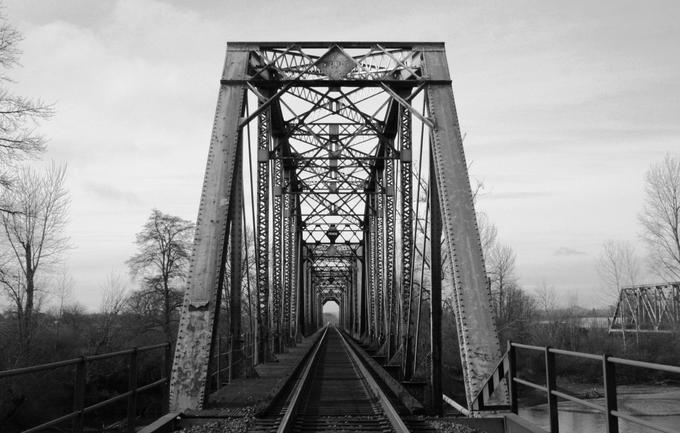Brooklyn Subdivision Bridge, Union Pacific Railroad (Harrisburg, Oregon)
- Title
-
Brooklyn Subdivision Bridge, Union Pacific Railroad (Harrisburg, Oregon)
- LC Subject
-
Architecture, American
Architecture--United States
- Alternative
-
Brooklyn Bridge (Harrisburg, Oregon)
Southern Pacific Railroad Bridge (Harrisburg, Oregon)
- Description
-
This image is included in Building Oregon: Architecture of Oregon and the Pacific Northwest, a digital collection which provides documentation about the architectural heritage of the Pacific Northwest.
- View
-
exterior
- Work Type
-
architecture (object genre)
built works
bridges (built works)
railroad bridges
- Location
-
Linn County >> Oregon >> United States
Oregon >> United States
Harrisburg >> Linn County >> Oregon >> United States
- Street Address
-
Milepost 662.98
- Date
-
1906
- Identifier
-
8_EastElev_IMG_3953
- Rights
-
In Copyright - Educational Use Permitted
- Rights Holder
-
Oregon State Historic Preservation Office
- Type
-
Image
- Format
-
image/jpeg
- Set
-
Building Oregon
- Primary Set
-
Building Oregon
- Institution
-
University of Oregon
- Note
-
"The Brooklyn Subdivision Bridge at MP 662.98 is a 1,563-foot-long structure that traverses the Willamette River. It replaced an earlier bridge in the same location. It is a five-span steel bridge designed with a 60-foot deck girder, two 200-foot pin-connected through-trusses, one 150-foot riveted through-truss, and one 240-foot swing-span. The use of a swing-span design reflected the desire to accommodate river traffic. The approaches to the bridge on each side of the river were originally timber trestle. The north approach was a 360-foot-long timber trestle bridge and the south approach was a 315-foot-long timber trestle bridge. They were replaced with concrete approaches between 2008 and 2010. This is an unusual bridge in that two types of trusses were used, giving it a transitional design that includes features from both the late nineteenth and the early twentieth centuries. It has pin-connected spans, more common in the late nineteenth century, and also has early rivet-connected spans, which began to be used in bridge design and construction in the early twentieth century. Original plans for the bridge were not found." Source: Historic American Engineering Record.
This image was included in the documentation related to a nomination to the National Register of Historic Places, a program of the National Park Service. The image is provided here by the Oregon State Historic Preservation Office and the University of Oregon Libraries to facilitate scholarship, research, and teaching. For other uses, such as publication, contact the State Historic Preservation Office. Please credit the Oregon State Historic Preservation Office when using this image.
